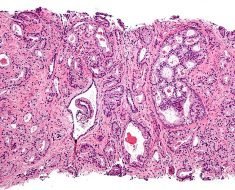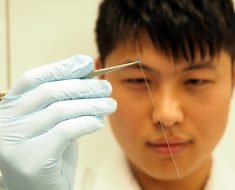The incidence of coronary artery compression in children fitted with epicardial pacemakers may be slightly more common than previously believed, say noted cardiologists. After reviewing patient records at Boston Children’s Hospital, they advocate for stricter monitoring to identify patients at risk and prevent complications. Their recommendations are published as a featured article in the journal HeartRhythm, the official journal of the Heart Rhythm Society and the Cardiac Electrophysiology Society.
Children who require pacemakers or defibrillators often need to have wires placed on the outside of their heart due to their size or unique anatomy. In rare instances, these wires can place the child at risk for “cardiac strangulation,” which can lead to compression of the heart muscle and coronary arteries (the blood vessels that feed the heart) over time.
“Coronary artery compression is thought to be rare,” explained lead investigator Douglas Y. Mah, MD, director of the Pacemaker and ICD Program in the Department of Cardiology, Boston Children’s Hospital, and assistant professor of pediatrics, Harvard Medical School, Boston, MA, USA. “Its true incidence, however, may be higher than we believed due either to a lack of awareness or lack of reporting in the literature.”
The sudden death of a child with an epicardial pacemaker following coronary artery compression prompted investigators to enhance surveillance of all patients with epicardial pacing or defibrillation systems. They reviewed the records of all patients followed at Boston Children’s Hospital from 2000-2017 who had either active or abandoned epicardial wires that included coronary imaging, either by computed topography (CT) scan or catheter angiography through the vessels in the leg. Of 145 patients, eight (5.5 percent) exhibited some degree of coronary compression from their epicardial leads. Six of these patients displayed symptoms; in addition to the case of sudden death, there were three cases of chest pain and two cases of unexplained fatigue. As a result of the review, seven patients underwent surgical removal or repositioning of their epicardial leads.
This study helps provide a framework for monitoring patients with epicardial pacemakers or defibrillators and identifying those who may need revision or removal of their epicardial wires. Dr. Mah and colleagues compared three screening techniques. They recommend that pediatric patients with epicardial devices should get screening chest x-rays every few years to assess how their wires look in relation to their heart, as the positioning may change as the child grows. They found that chest X-ray had a high specificity and was a good screening tool, easy to perform, inexpensive, and non-invasive. However, it can produce some false-negatives even when patients were symptomatic.
The authors propose that patients with concerning chest x-rays, symptoms such as unexplained chest pain or tiredness, or evidence of heart muscle damage or dysfunction should ideally have a cine CT scan that can image the heart moving in relation to the epicardial wires. Although this can also result in a false-positive, CT is less risky for pediatric patients because radiation doses are now much lower for this non-invasive imaging method.
If cine CT is not available, they advocate that patients undergo catheter angiography to confirm the diagnosis before taking a patient to surgery.
“The use of pacemakers and defibrillators in children is growing,” noted Dr. Mah. “As more epicardial devices are implanted, more children may be at risk for developing coronary compression from their leads. We hope to increase awareness among healthcare providers and patients of this important, possibly preventable, and potentially fatal complication and provide a useful screening algorithm to detect at-risk patients and ultimately prevent complications.”
“This article clearly emphasizes the need to not only carefully evaluate the potential site of electrode head fixation to avoid coronary injury, but also the need to evaluate closely where to route the electrode body to the device pocket,” commented Gerald A. Serwer, MD, FHRS, pediatric cardiologist at the University of Michigan’s C.S. Mott Children’s Hospital, Michigan Medicine, Ann Arbor, MI, USA, in an accompanying editorial.
Source: Read Full Article





